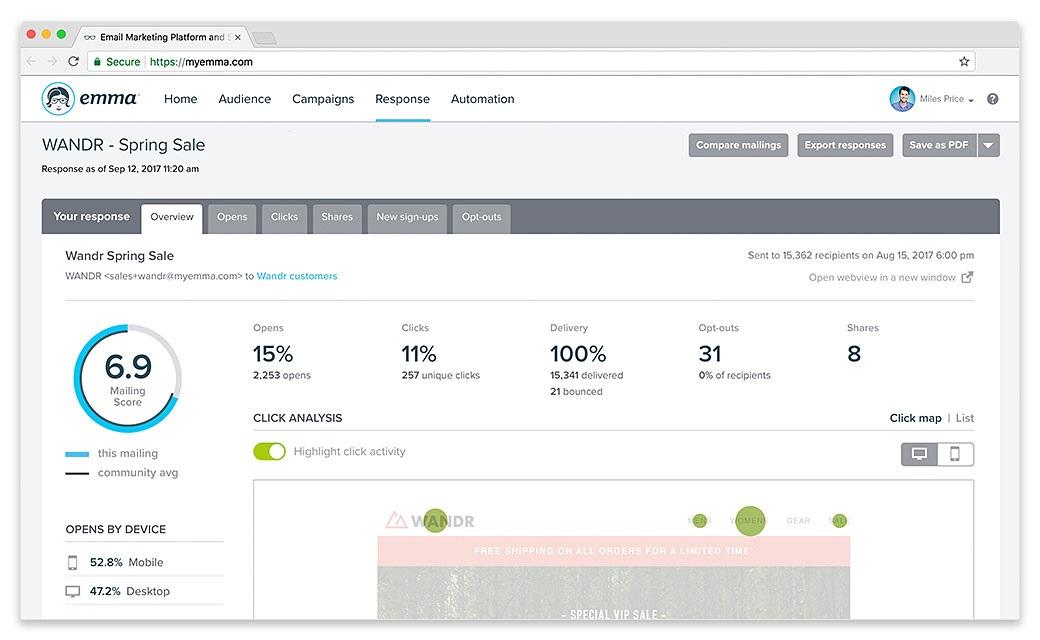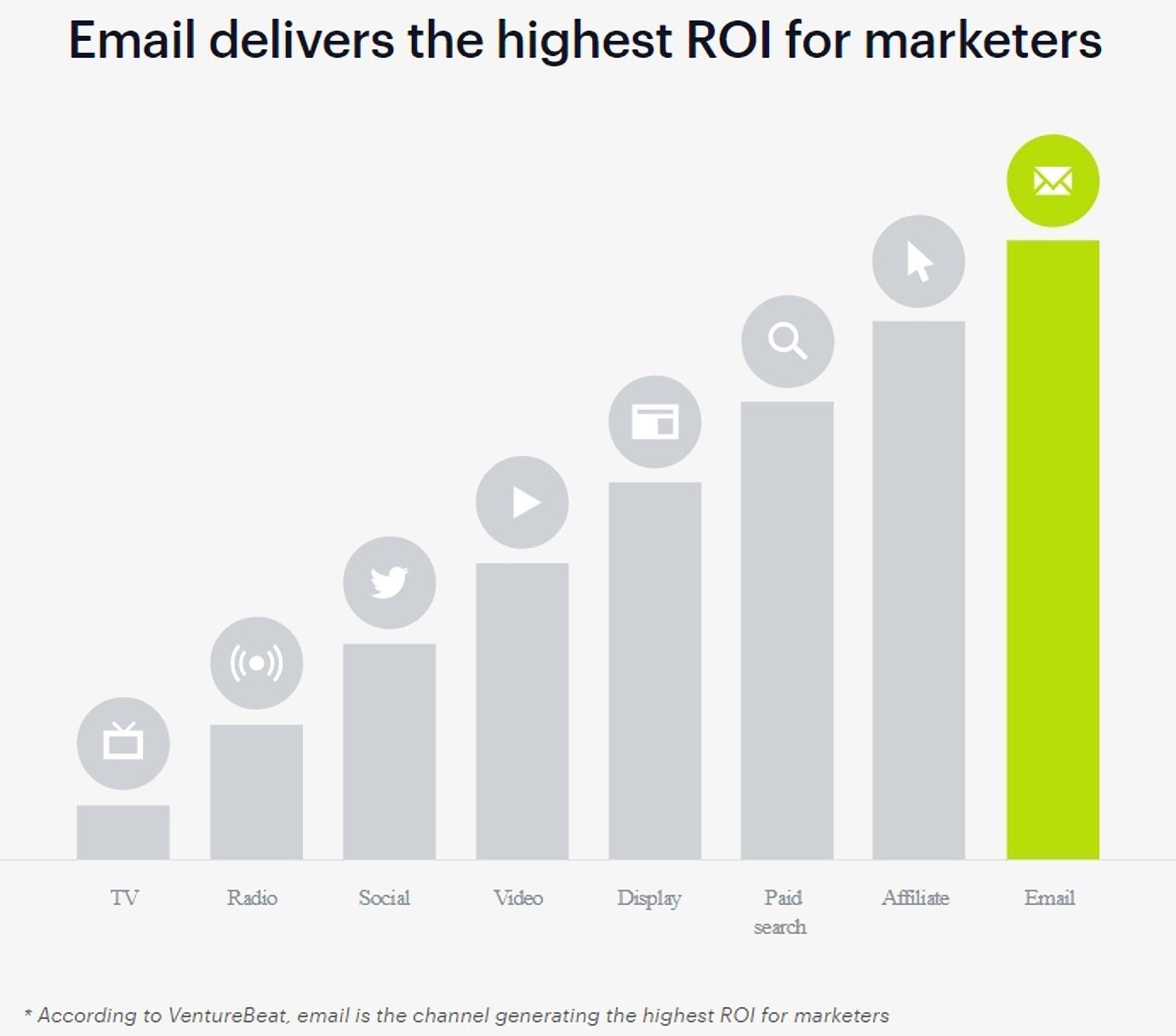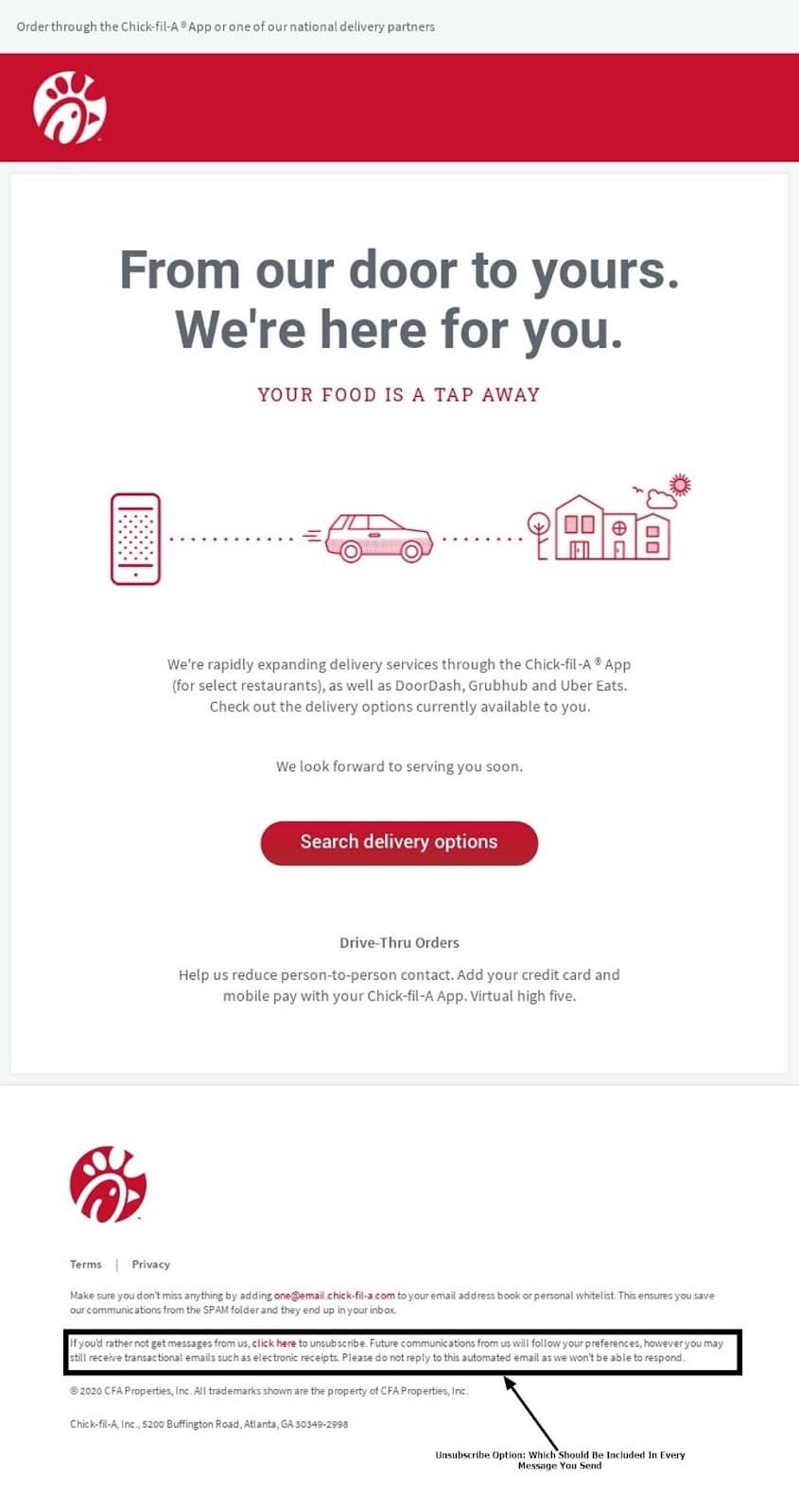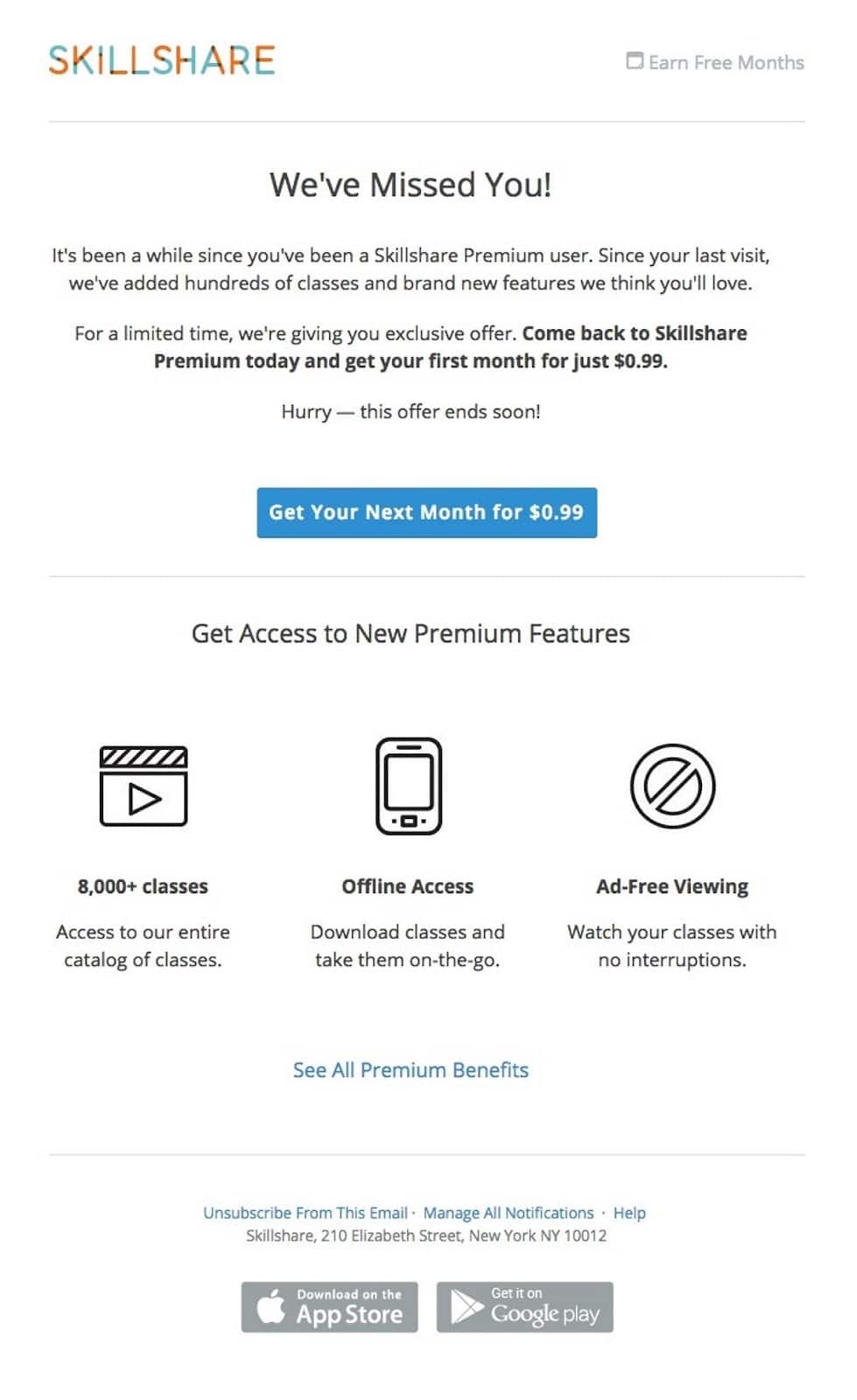6 email engagement metrics you should be tracking in every send

Trivia question: How do you decipher which of your email campaigns are working and which aren’t?
If you answered “engagement metrics,” you’d be right.
There are a variety of metrics that should be monitored regularly. They’ll not only determine a campaign’s success, they’ll also help decipher which of your tactics work best with your subscribers.
You simply can’t market to everyone. That’s why having the right tools available can make or break your email campaign. And knowing exactly what’s resonating with readers and why is crucial.

Source: Emma
Why your email engagement metrics matter
The value of email marketing is quite astounding. It’s one of the most valuable digital marketing methods. Currently, email marketing has an average return on investment (ROI) of $38 for every $1 spent.

Source: Campaign Monitor
While that’s an intriguing piece of information, you won’t reach those numbers without knowing who your audience is and what they want to see from you.
That’s where careful monitoring of your email engagement metrics comes in. When you create a campaign, you have no way of getting into the mind of your subscribers — at least not physically. It’s only through monitoring a variety of data that you’ll be able to see preference patterns and gather information.
What are email engagement metrics?
Email engagement metrics are exactly what they sound like: pieces of data that tell you who your active readers are, what emails they enjoy, which links they click on, and so much more. Each piece of data tells you specific bits of information.
There are quite literally dozens of email engagement metrics worth monitoring, and you can find some of the most common below.
Subscribe and unsubscribe rates
Your subscribe and unsubscribe rates tell you who’s interested, and who has lost interest, in your brand. These metrics tell you what’s working with your lead generation process, and what isn’t working when delivering your promised content.
-
Subscribe rate: The number of new subscribers in a predetermined time frame.
-
Unsubscribe rate: The number of individuals who have unsubscribed during a particular campaign or over a predetermined time frame.

Source: Really Good Emails
Bounce rate
Bounced emails are messages that couldn’t be delivered. Your bounce rate tells you how many messages were undeliverable during a single campaign. There are two types of email bounces:
-
Soft Bounce: Caused by a subscriber error, such as a full inbox or too-large file sizes.
-
Hard Bounce: Caused by invalid email addresses — whether fake or misspelled. These are considered the most dangerous to your deliverability.
Click-to-open and click-through rates
Marketers often use these terms interchangeably. But each is its own measurement.
-
Click-through rate: Measures the percentage of recipients who clicked the call to action (CTA). (Marketers often use the term click rate for this as well.)
-
Click-to-open rate: Measures the percentage of people who opened your email and those who clicked your CTA.
Open rate and unique open rate
Your email open rate is precisely what it sounds like: the number of times your subscribers opened your email. While some use open rates and unique open rates interchangeably, they’re actually two very different terms.
-
Email open rate: The total number of times your email was opened. This also counts each time an email was opened by the same subscriber.
-
Unique email open rate: The total number of times your email was initially opened. This doesn’t include any cases where the same subscriber repeatedly opens the message.
Spam rate and complaint rate
Your spam rate (also referred to as your complaint rate) is the number of times your message or campaign was marked as spam by either your subscribers or their email client.
6 additional email engagement metrics you should be tracking
While the aforementioned email engagement metrics are commonly utilized by marketing professionals to gauge their subscriber’s overall engagement, there are several others worth monitoring as well. Check them out below.
1. Relapse rate
Your relapse rate is the percentage of people who, at one point or another, were re-engaged thanks to a re-engagement campaign — but they’ve since become inactive again.
Those that return to an inactive status are called relapsed subscribers. This is an excellent metric to monitor because it can help you identify which re-engagement tactics actually work and which ones have flopped.

Source: Really Good Emails
2. Action rate over time and engagement over time
Your action rate over time measures the overall activity throughout the day. This helps narrow down your ideal send time because it shows you how many subscribers open and engage with your content at a given point in their day.
This term is often used interchangeably with engagement over time, which offers you information based on a given day, or across a specific period of time.
3. Purchase rate and conversion rate
Your email conversion rate, otherwise known as purchase rate, will tell you how many people not only clicked on your CTA but followed through, and:
-
Made a purchase
-
Completed a signup
-
Filled out a survey
-
Downloaded a document
In short, this figure will tell you the percentage of people who took the action you wanted them to.
4. Revenue per email
Your revenue per email (RPE) tells you approximately how much revenue you get from your email list. Take your total revenue from a given campaign and divide it by the number of recipients (excluding any that bounced back).
5. List growth rate
Your list growth rate tells you the rate at which your email list is growing. How to calculate this: Take the number of new subscribers, minus the number of unsubscribed, and then divide that by the number of email addresses on your list. Finally, multiply that number by 100, and you’ll have your list growth rate.
6. Forwarding rate and email sharing rate
If you’re curious about how well you’re doing in the brand advocacy stage of the customer lifecycle process, pay careful attention to the number of email shares or forwards your messages get.
Using these email engagement metrics to craft the ideal campaign
By monitoring these metrics and running a variety of A/B tests, you can start crafting email campaigns that look nice, function properly, and get real results. If you don’t take the time to really learn from your results, your efforts were all for naught. That said, use the information to help you:
-
Craft a message your readers will respond to
-
Land your campaign in the right inbox at the right time
-
Encourage further engagement and shares
Wrap up
Creating the best email campaign means nothing if you aren’t carefully monitoring your email engagement metrics. This is the only way to tell if a campaign is successful or not.
While you can (and should) be monitoring your traditional email engagement metrics, it’s worth taking the time in monitoring additional metrics, including:
-
Relapse rate
-
Action rate over time or engagement over time
-
Purchase rate or conversion rate
-
Revenue per recipient
-
List growth rate
-
Forwarding rate or email sharing rate
Ready to see how the right email marketing tools can help you increase your productivity? Schedule your live demo with Emma today.
MOST RECENT ARTICLES
Want to engage your audience and grow your brand? Try Emma's robust easy-to-use product today.












